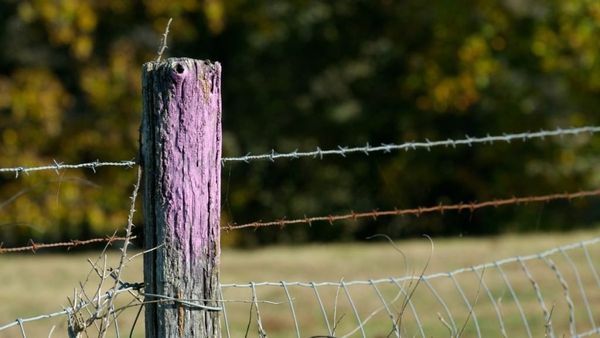
Have you ever driven by a house and noticed a fence post or tree with a purple stripe on it? It might have made you wonder what it meant. Well, that purple stripe is more than just a decorative touch – it actually carries a very important message. So, let’s talk about what those purple fence posts are all about, especially if you come across them in certain states.
What Do Purple Fence Posts Mean?
In several states, a new rule has been implemented to keep people off of private land. Instead of using traditional “No Trespassing” signs that can fade or get damaged, landowners now have the option to paint a purple line on a tree or post. The purple paint serves as a clear message, telling people to stay away from the property. Unlike signs that can be easily stolen or lost, the purple paint remains visible for a much longer time.
Why Purple?
Not only does purple stand out in nature, but it’s also a color that grabs attention. However, there are other colors that can be used in the same way.
How to Recognize a Purple Fence Post
To ensure that the purple stripe stands out, it should be painted on the fence post at a height of three to five feet above the ground. If it’s too low, it might not catch your eye. Additionally, the stripe should be wide enough to be easily seen – typically one inch wide and eight inches long. Landowners should also paint additional posts every hundred feet or so to clearly mark the property boundaries.
States with Purple Paint Laws
Since Arkansas passed the first “purple paint law” in 1989, almost half of the states have implemented similar legislation. If you come across purple fence posts, it’s likely you’re in one of these states:
- Alabama
- Arizona
- Arkansas
- Florida
- Idaho
- Illinois
- Indiana
- Iowa
- Kansas
- Louisiana
- Maine
- Maryland
- Missouri
- Montana
- New Hampshire
- North Carolina
- Pennsylvania
- South Carolina
- Tennessee
- Texas
- Virginia
- West Virginia
Other Colors with the Same Message
While many states require the use of purple paint, it doesn’t mean they have to. Some states allow alternative colors to convey the same message. For example, orange paint can be used in Idaho and Montana, while Maryland uses blue paint. Before marking your own fence posts, it’s important to research the rules in your state to avoid any penalties.
So, keep an eye out for purple fence posts – they might just save your life. Make sure to share this important information with your family and friends!




